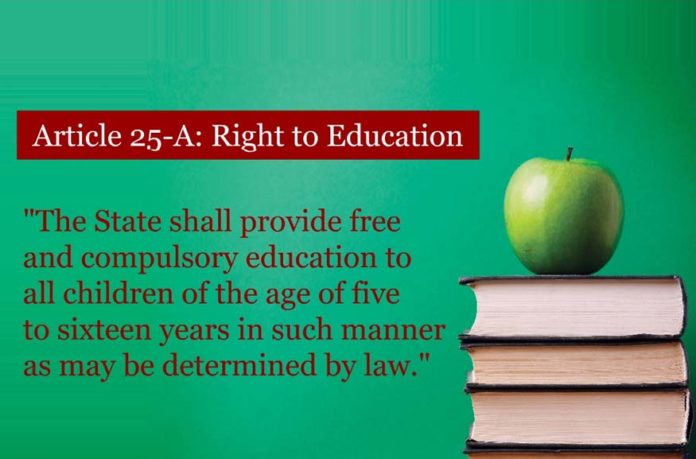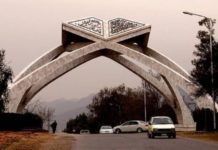Disclaimer: The Eqbal Ahmad Centre for Public Education (EACPE) encourages critical and independent thinking and believes in a free expression of one’s opinion. However, the views expressed in contributed articles are solely those of their respective authors and do not necessarily reflect the position or policy of the EACPE.
Article 25-A was inserted via the 18th amendment in the Pakistani Constitution by April 2010, which assured ‘free and compulsory’ education to all children of the age of five to sixteen years. The ‘right to education’ was incorporated as a ‘fundamental right’ in constitution under this article. Its implementation status, however, is still dormant to date, consequently millions of children are out of schools.
Why Pakistan is not taking its constitution seriously? Are citizens aware of what does such fundamental right to education mean? If yes, then why do so many cases are not filed against state’s violation of constitution? Why do supreme court building is silent to maintain it?
The socioeconomic disparity in Pakistan is vast, where such fundamental right to education is different for different class in terms of choice of school. There are clusters of schools, where only kids of parliamentarians, ministers, and bureaucrats are admitted, whereas the government schools are the only choice for poor children.
It’s worth mentioning here that thousands of private schools are available to nation’s children. Except few, many have adverse infrastructure and no proper facilities to meet the desired standards. A significant number of such are street schools, where unqualified staff, with low academic and professional qualifications teach.
Despite tall claims by previous federal and provincial governments regarding improvement in education sector, still almost 23 million kids are out of schools.
It is observed that students of private institutions have higher success ratio in various entry tests examined by respective medical and engineering institutions, while the government schools’ students are not even competent in speaking English or Urdu and don’t approach any standardized institute for their future education. Elite kids, on the other hand, easily find top colleges and universities in Pakistan and even abroad.
Madrassa education is also running in parallel, which is attributed to ‘mazhabi taleem’ while aforementioned are ‘dunyawi’ taleem.’ Schools and madrassas, both flourish the child at two extremes.
The government’s attempt of right to education has been failed to date. The parliamentarians seem not interested regarding government schools performance. This is where the word fundamental right loses its meanings.
Despite tall claims by previous federal and provincial governments regarding improvement in education sector, still almost 23 million kids are out of schools, something which calls for the imposition of education emergency. Balochistan is home to the highest proportion of out-of-school children followed by Fata.
The government must consider the status of article 25-A and guarantee its implementation in true sense. Our elected parliamentarians must spare sometime to refine and renew the concept of fundamental right to education. The provincial governments too should revive this article. One system of education policy, for all children of the nation, must be initiated.
 The writer, Irfan Khan, is a Researcher of Natural Sciences at Physics Department, Quaid-e-Azam University, Islamabad, Pakistan. He can be reached at ik8828903@gmail.com
The writer, Irfan Khan, is a Researcher of Natural Sciences at Physics Department, Quaid-e-Azam University, Islamabad, Pakistan. He can be reached at ik8828903@gmail.com



 The writer, Irfan Khan, is a Researcher of Natural Sciences at Physics Department, Quaid-e-Azam University, Islamabad, Pakistan. He can be reached at
The writer, Irfan Khan, is a Researcher of Natural Sciences at Physics Department, Quaid-e-Azam University, Islamabad, Pakistan. He can be reached at 



